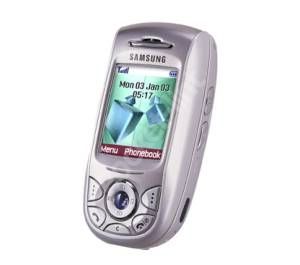With Samsung bringing out what seems to be a new phone every week it was with great trepidation that we agreed to look at yet another one of its models - this time the e800.
Our quick take
This phone does lack the all-important elements for any business user - ie tri-band and Bluetooth connectivity. Additionally for the early adopter the digital camera quality although coming with the brightest flash we’ve ever seen on a mobile phone still isn’t up to the fast becoming 1 megapixel de facto standard. Likewise the annoying ring tones and use of the 64 polyphonic sounds will drive traditionalists mad. However all that aside this is a small and easy to use phone that offers a good upgrade for Siemens SL55 users. Should you rush out it buy one, only if your looking for a small phone that isn’t a technology leader.

Samsung SGH-E800 - 3.5 / 5
| FOR | AGAINST |
|---|---|
|
|
From the outset you can’t help but think of the Siemens SL55 pebble phone and it seems that Samsung, on its path to world phone domination (rumours are it will be making one of the launch Vodafone 3G units), has taken a leaf out of the German manufacture in its design. Like the SL55 this phone has been shaped to be small and petit. On the front you are presented with a large colour screen, and an array of buttons to answer incoming calls. Additionally Samsung has placed a d-pad on the along the rest of the buttons and this gives further shortcuts to areas within the phones menu.
Slide the 65k LCD screen up and like the Motorola V80 a keypad is revealed. Also revealed on the rear of the phone is a 640x480 digital camera. The sliding action, like other models made by Samsung is well balanced and you’ll find yourself sliding the screen backwards and forwards out of sheer boredom rather than necessity. We say this because of the nicer features of the phone is that you don’t have to slide the screen to answer the phone and the lack of aerial makes this ideal for those conscious of being seen with a phone against their face.
Turn the machine on and you’re greeted with the Samsung interface found in any other phone in the range. Depending on your feelings will depend on whether you like that or not, but one thing seems openly apparent with this model is that expect it to make lots of noises - strange noises - at you whenever you opt to do anything. Tap a number into the keypad and every number makes a different note, connect a call and you get another sound, in fact it seems you can’t do anything without some noise or other. This of course stems to the polyphonic ring tones - all 64 of them, however for the traditionalists amongst us it would have been nice to include a standard ring tone in the selection rather than everything but.
Other gripes are that you can’t seem to set the phone to ring and vibrate at the same time. You can have it vibrate, ring or vibrate then ring and on a number of occasions we found ourselves missing calls because we either couldn’t hear it or if set to vibrate then ring only realised it was ringing two seconds before the answer machine service cut in.
Dual band and java-enabled, the phone won’t be for the US traveller, however at least you can play games or run other applications in those moments of boredom. The quick access button to the calendar on the front D-pad is a nice thought and one that we found ourselves using more than we thought we would. Like most calendars in phones you can set reminders of birthdays and other important events, however because its been brought to the top level rather than being buried deep in the menu system we found while we reviewed the unit we did use it.
To recap
This a sexy little number, but not without its drawbacks and problems
